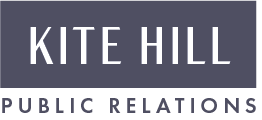While many public relations pros will tell you that the press release has died, I'm firmly in the camp that it has not – but it has taken on a new role for public relations professionals. As opposed to being one of the sole weapons in a PR person's pitch arsenal, it's now just one of the many tools we can use to secure and subsequently shape stories. A press release has a place alongside targeted tweets, smart pitches with multimedia and that ringing-thing Alexander Bell invented.
Here are four ways to use press releases effectively today:
One, as a reference tool. A press release can help you to organize and prioritize information about the product or service that you are formally announcing and add an extra layer of credibility to your news (especially for start ups). It doesn’t matter if you’re talking to a mainstream Pulitzer Prize winning journalist or a mommy blogger, you need to give them all the facts they need to properly cover your news.
Two, for Search Engine Optimization (SEO). Press releases can be used to gain a foothold on search engines. If you are releasing evergreen content or data-driven news like research study results, a smart way to ensure that your news gets eyeballs over time is to distribute a highly optimized release. If you don’t have the in-house resources to help optimize your release, any wire service should be able to offer advice on keywords and general SEO tips.
Three, as a resource page. I've also worked with providers where in a time crunch for a big launch, my press release was turned into a dedicated media resource page with fact sheet links, images, multimedia, and social media call to actions. Business Wire, for example, helped me to create a robust branded Smart Marketing Page around the launch press release for HuffPost Live, our new streaming network.
Four, as a social media driver. With social media and media relations becoming increasingly intertwined, it’s a smart move to incorporate social media calls to action in your release. Consider including a hashtag associated with the news in your headline and links to your Facebook and Twitter pages in your boilerplate.
Read the full article in PR Week here: http://bit.ly/119PVQ1
